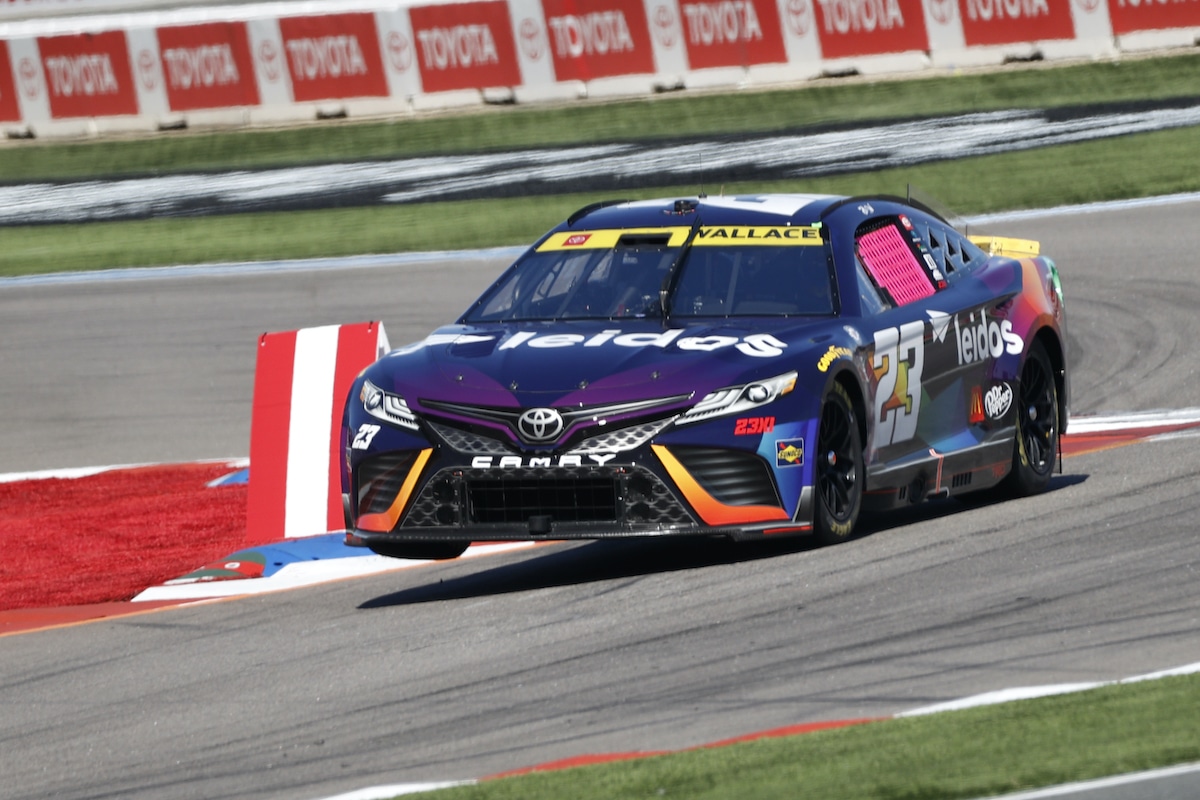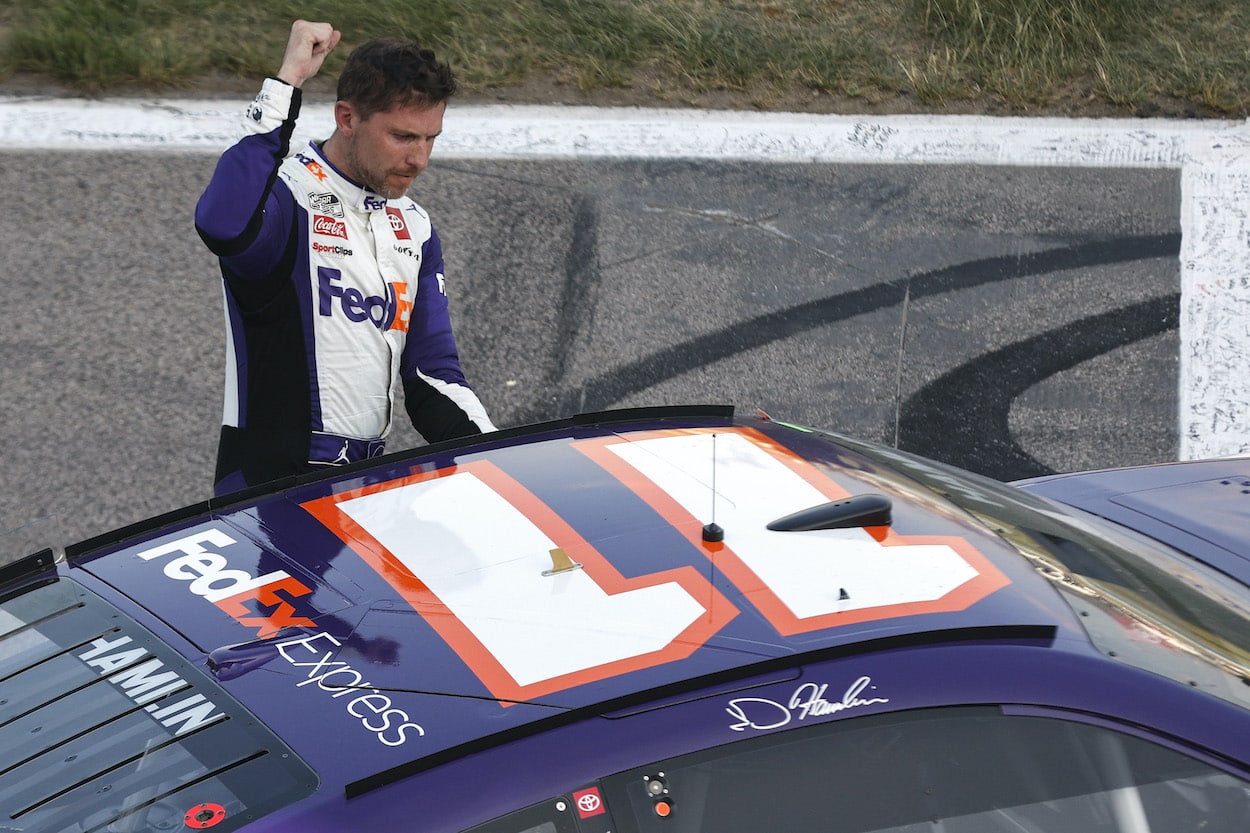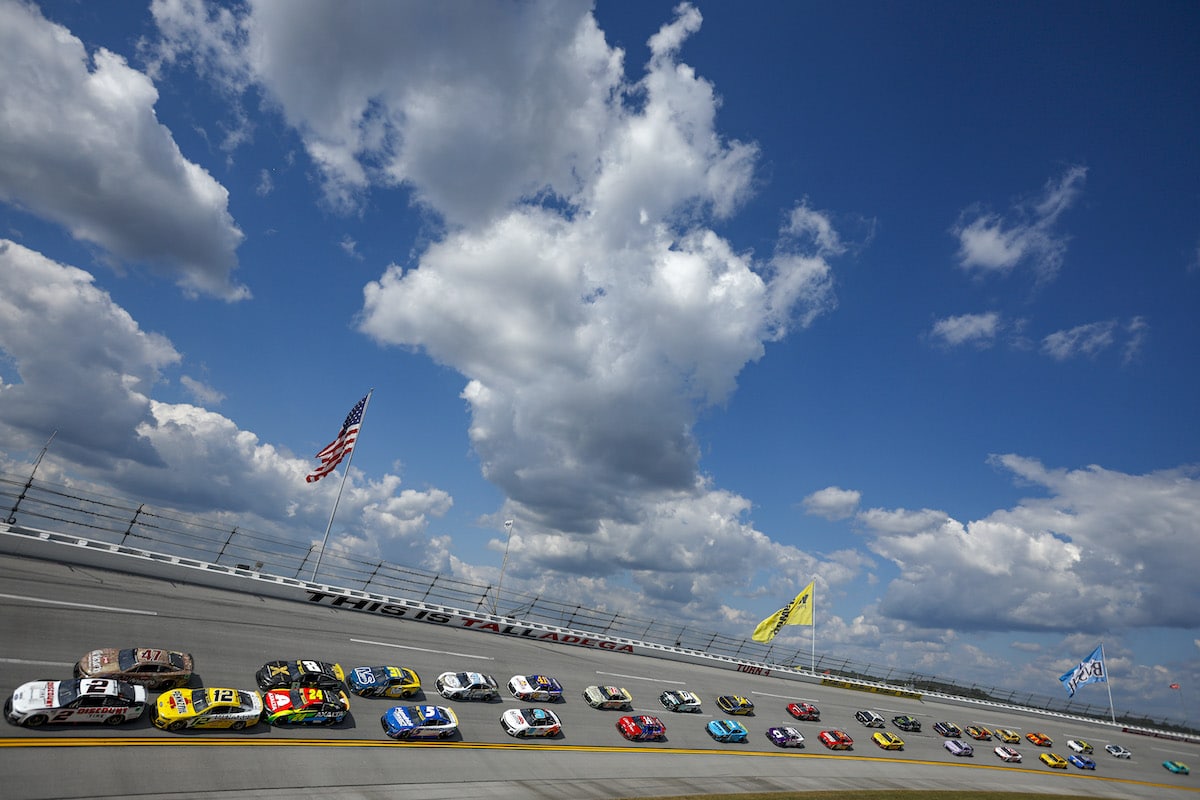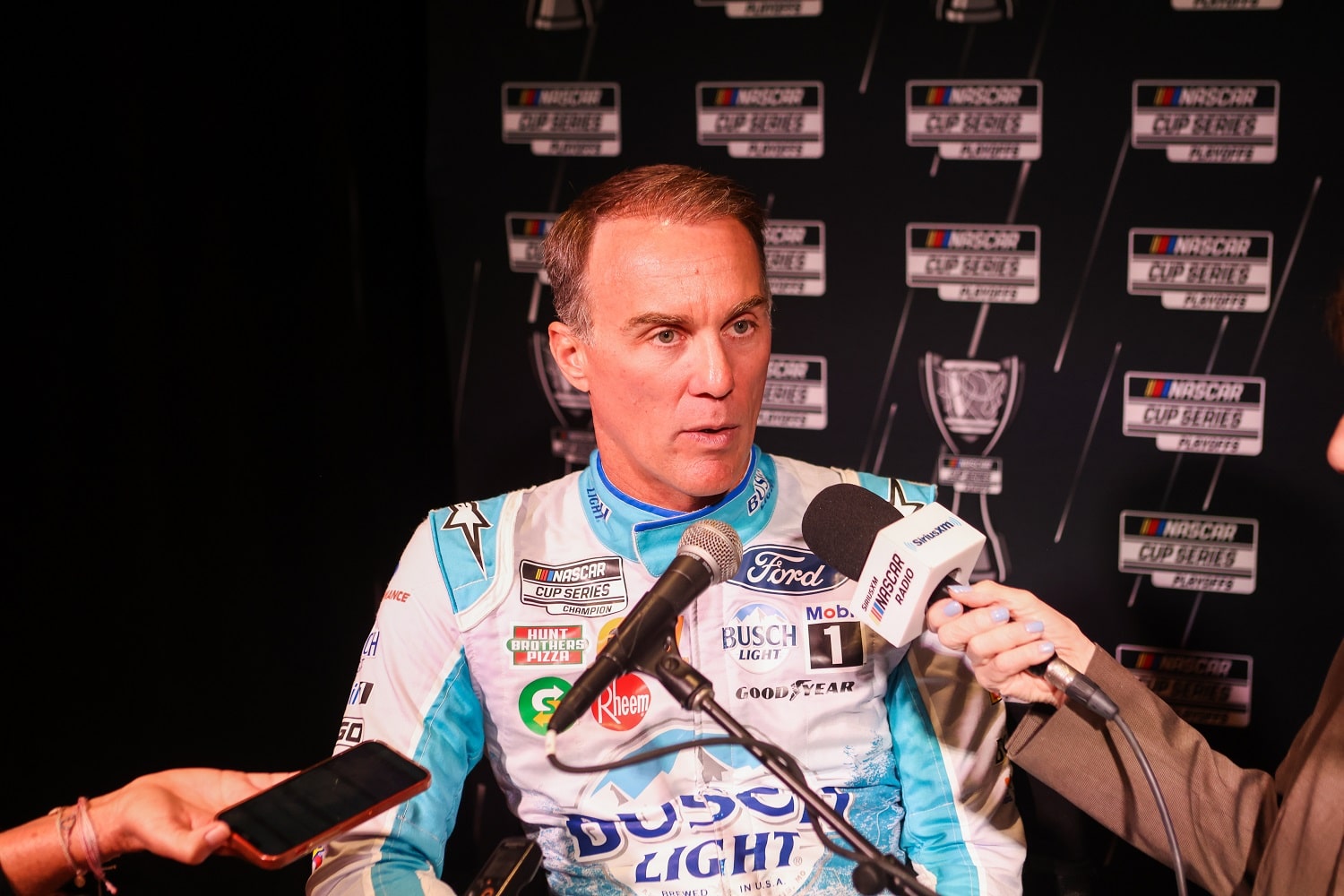
Kevin Harvick’s Scare Is a Reminder 1 of NASCAR’s Safety Rules Is Actually Dangerous
Drivers criticizing NASCAR publicly for anything related to safety issues know they’re playing with fire because a fine likely will follow. But if NASCAR docks Kevin Harvick for Sunday’s outburst at the Southern 500 as the Cup Series kicked off its playoffs, then there should be about three dozen fellow competitors offering to chip in. Everyone in attendance saw an episode involving the No. 4 Ford that was flat-out dangerous.
It was a bad look for the sport and a reminder NASCAR enforces a rule it needs to change faster than crews were changing tires at Darlington Raceway.
Kevin Harvick’s car caught fire in the opening playoff race
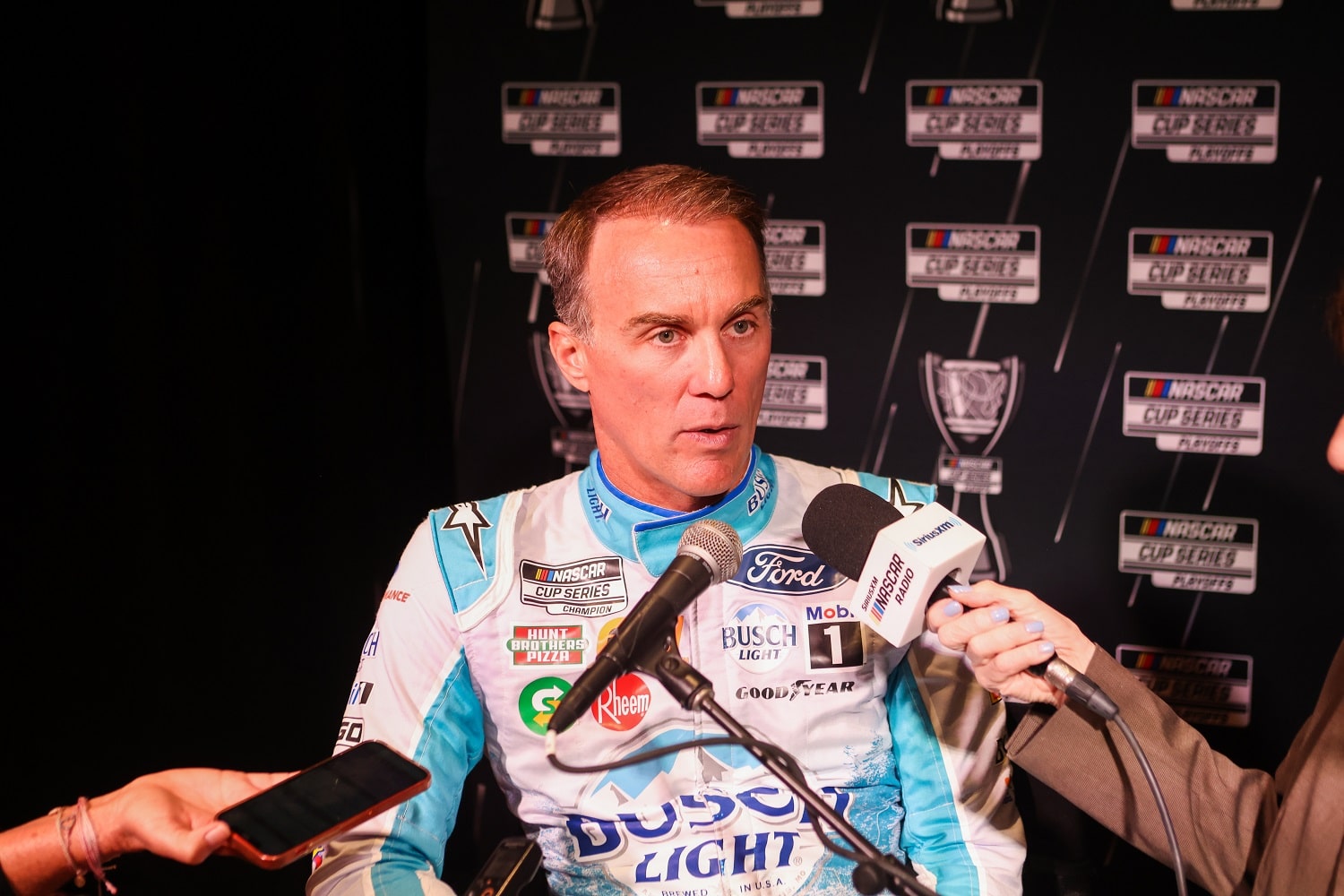
Veteran NASCAR Cup Series driver Kevin Harvick fled his car when it caught fire during Sunday’s Southern 500 in front of a capacity crowd. Wrecks can result in smoke and flames, but that wasn’t the case here. Harvick was at speed high on the track when flames started shooting out from the left side. He radioed his crew to say the rocker panel was on fire.
He navigated down the front straightaway to get to the bottom of the track, by which time the flames were shooting from beneath the car on both sides. Harvick needed several seconds to unbuckle and get out as help raced to the scene.
“What a disaster for no reason,” he told NBC Sports shortly afterward. “We didn’t touch the wall. We didn’t touch a car and here we are in the pits with a burned-up car, and we can’t finish the race during the playoffs because of crappy-a** parts.”
Burning cars have been an issue in the first Next Gen season
The Next Gen car that made its NASCAR Cup Series debut this season has experienced numerous fires. The primary culprit has been the dual exhausts venting from beneath the doors. Most frequently, hits to the side of the car dislodge the piping and spew intense heat into foam and insulation beneath the rocker panels. Smoke and flames ensue.
A notable incident came at Indianapolis, where Chris Buescher’s Ford suffered damage after contact with Bubba Wallace’s car. Buescher smelled smoke and then saw it start pouring into his car. By the time he reached the pits, the car was clearly on fire. After the race, Joey Logano had to bail out of his ride during the cooldown lap because of a fire.
Seven days later at Michigan, a flat left-front tire on the No. 41 Ford triggered a fire that led to Cole Custer having to bail out in the pits. A week later at Richmond, Chase Briscoe’s No. 14 Ford caught fire late in the race. He was able to roll into his pit box for the crew to extinguish the flames as smoke billowed.
The prudent move for Buescher, Custer, and Briscoe would have been to pull over on the apron at the first sign of trouble. Experience has shown smoke isn’t going to stop on its own in those situations, and flames are inevitable.
Unlike Kevin Harvick, who had no choice because his situation was getting bad in a hurry, the others kept going until they reached the pits. There was a reason for that, and it’s a bad one.
NASCAR needs to change a bad safety rule
Kevin Harvick was an exception, buy competitors have repeatedly driven back to their pit stalls rather than pull over once smoke starts filling the car’s cabin. They do that even if emergency vehicles with fire extinguishers stationed around the track are nearby.
The drivers are hoping their teams can knock down the flames and the car is not damaged beyond repair so that they can resume racing. And unless the situation becomes dire, they remain in the cars. The reason stems from a bad NASCAR rule.
Under those rules, drivers are done for the day once they leave their car unless they do so after the race has been red-flagged. Thus, the drivers put themselves at risk twice, first by trying to navigate back to the pits and then by sucking in more smoke and risking burns while the crew extinguishes the fire.
NASCAR officials seem to be the only people failing to grasp how inherently dangerous that is. Given the ability to get out of the car without penalty while the team tackles the hazard, drivers would choose safety over stubbornness almost every time. That can’t happen, though, until NASCAR changes its questionable rule.
Like Sportscasting on Facebook. Follow us on Twitter @sportscasting19 and subscribe to our YouTube channel.
Got a question or observation about racing? Sportscasting’s John Moriello does a mailbag column each Friday. Write to him at [email protected].
